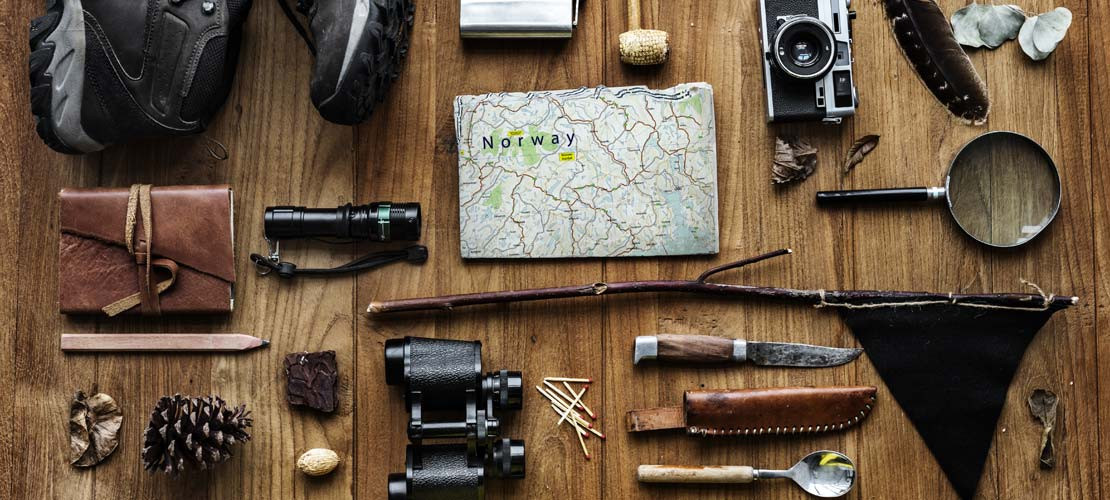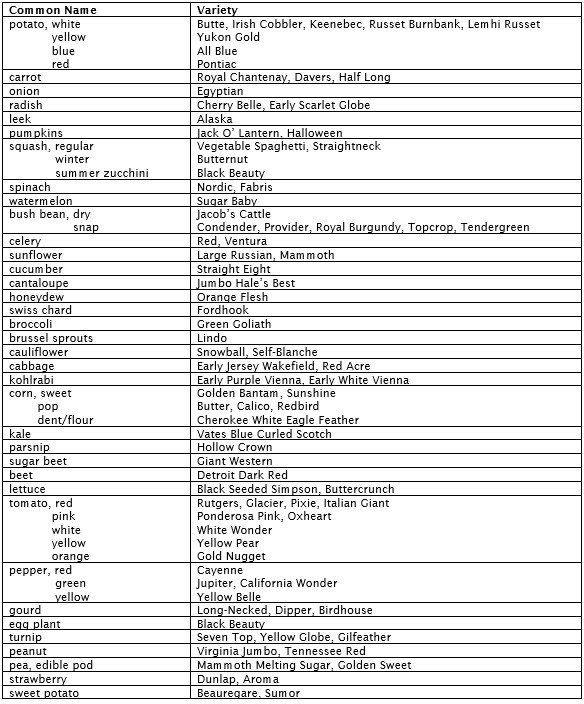72-HOUR BUG-OUT KIT FOR ONE INDIVIDUAL
Depending on the time of year and your location, will depend on other survival equipment you may want to have available. You can add to this list or substitute as needed. If you will be walking, you will want to cut down on some items.
Food: Six complete MRE meals, five gallons of water, a five gallon container, six packages of cocoa, four packages of soup, a purification straw and nine pounds of dog food.
Communications: a 4-way solar radio, a short wave radio, batteries, a whistle and a signal mirror.
Shelter: A tube tent or small tent, 50 feet of nylon cord, a poncho with liner, a rain suit, two space blankets and a sleeping bag.
First-Aid: Antiseptic wipes, spot bandages, gauze pads, non-adhesive pads (2"x3"), bandage strips, non-aspirin, needle and thread, safety pins, latex gloves and a minor surgery kit.
Equipment: A folding shovel, an axe or saw, a belt knife and gloves.
Firearms: a pistol, a, holster, a, rifle, magazines, ammo and cleaning gear.
Heat: A fire starter kit, matches and/or a lighter, two hand waters, fuel and five Sterno for the stove.
Personal: Soap, a toothbrush and paste, a comb, a towel, a razor, finger nail clippers, sanitary napkins, glasses, prescription drugs, herbs, legal papers, a complete change of clothing and a jacket or coat.
Light: A flashlight with batteries, candles and six cyalume sticks.
Other: A canteen cup, a spoon, a canteen with cover, a pen and notebook, a canteen stove, credit cards, money, a bible, other reading material, insect repellant, vitamins, topographical maps, container for all the above, a compass, a, sewing kit, a backpack, fishing equipment, a tarp and flares.
GARDEN SEEDS AND BULBS TO STORE
The following varieties are my recommended favorites. Try different varieties to know what works best in your area. It takes a few years experience to learn how to grow plants and it is a continual learning experience. Look in catalogs for words like, old time varieties, open-pollination, grandfather or heirloom.
Seed Savers Exchange, 3076 North Winn Rd., Decorah, IA 52101, lists in the 1995 winter yearbook 17,683 listings from 1,031 listed members; $25 a year. Some discounts apply.
Check out your local co-operative extension service; it's free. They have many free publications. Apply to become a count master gardener. You may meet some seed savers.
Note: French marigolds repel most animals. Most seeds will last five years or more if you put them in a dark glass container, in your refrigerator. It is better to put seeds into a metal can with nitrogen. Shelf-life is over ten years. Happy seed saving.
EMERGENCY CAR KIT
You can tailor your car survival kit to your personal and family needs depending on where you live and the time of the year. Put in your kit the things you will need. Add to or take out as your needs allow.
DANGER: Do not use trioxane inside your vehicle. It will burn your eyes. Use Sterno or hexamine and crack your windows.
Kit: Jumper cables, anti-freeze, canned heat, starter fluid, MRE's, candles or matches, lighter, rain suit, space blankets, tire patch, air generator, food bars, socks, come along, Sterno and stove, sunscreen, garbage bags, tarp, compass, topographic map, flares, strobe light and case, parka, sand or cat litter, cell phone or CB, oil, hand warmer and fuel, cable and winch, fan belt, canteen cup, small pot, toilet paper, towel, pen and paper, medication, tool kit, tea/coffee/cocoa, women's personals, belt knife, 100 foot nylon cord, toothbrush and paste, bible, saw or axe, first-aid kit, granola bars, boots/hat/gloves, drinking water, defensive weapon, shovel, metal canteen, windshield washer fluid, box or bag to carry items, signal mirror, whistle, cayenne pepper, flashlight/bulb/batteries, hoses, dry soup, reading material, sunglasses, duct tape, snares, water purification straw and radio.
A THREE DAY RECON PATROL OR THREE DAYS IN THE WOODS
Depending on the weather and terrain, you will have to decide what kit you will need. Remember, you have to carry your kit; take only what you really need.
Kit: First-aid kit, poncho with liner, belt knife, pistol belt, pistol/ammo pouches/three magazines, rifle/ten magazines/three ammo pouches, cleaning gear, signal mirror, "H" or "Y" suspenders, two canteens with covers, angle head flashlight/batteries/bulb, red lens, sunglasses, flares/smoke, pen/paper, "H" harness, canteen cup/stove/fuel, compass/case, backpack, purification tablets, topographic maps, communication equipment, binoculars, foot power, handkerchief, toothbrush/paste, small towel, 50 foot nylon cord, 50 foot rope, toilet paper, 6 MRE meals, entrenching tool, vitamins/herbs, night vision scope and camera/film/batteries.
FIRE STARTING
You want to learn to start a fire for many reasons: signaling, keeping animals away, repelling insects, light, water purifying, cooking, to prevent hypothermia, heat, drying clothing, food preserving and boiling surgical instruments.
Flames are used to boil and coals are used for broiling as in cooking in a Dutch oven.
The four components needed to build a fire are fire starters, tinder, kindling and fuel.
SOME EFFECTIVE KITS
Flint and steel kit: flint, steel, charred cloth and a bird nest.
Bow drill kit: bow, spindle, bow string, fire board and socket.
Steel wool and a nine volt battery (a car battery will work), work great.
OTHER FIRE STARTING MATERIALS
Other fire starting materials: pine pitch resin, rolled newspaper dipped in wax, charcoal, paper egg carton filled with wax, coal, wood, shot shells, pine needles, dried grass, bird's nest, plant fiber, milkweed pods, cattails, lighter, lighter fluid, magnesium bars, hand or road flare, waterproof matches (encased), gas lighter, magnifying/camera/binocular lens, firelighter, buddy burner (wax and cardboard), lint (from your dryer), flame, fire ribbon or fire paste, Sterno, Gerber steel and tabs, wire saw, solid fuel blocks, charcoal lighter/starter, fuel tabs (hexamine or trioxane), firesticks and candles (stearine: burn it or eat it).
Sodium chlorate and sugar add spark, potassium permanganate crystals (1 tsp.), anti-freeze (2 drops), PPC (1 tsp.), sugar (pinch) and mix together. Potassium chlorate (1 tsp.), sugar (pinch), sulphuric acid (9 drops): SPARK!
If you don't know what you are doing, don't do it! Chemicals are always dangerous. Wear gloves, eye protection and never smell chemicals. The above is for information purposes only; please be careful.
Hand flares should be fired into a hole at least 2 feet deep, with the hole filled with brown dried grass or other dried tinder. Road flares are safer.
Your kit should fit into your pocket or on your belt. An M-14 pouch, with a plastic waterproof plastic bag inside, works well. Keep it with you at all times. The kit should not make noise when you walk or run.
Always read instructions before using something new; it could save you from an injury or death.
The fire kit cans be as large or small as you want. Add to or take away as you please. Be careful!
BACKPACKERS CHECKLIST
Depending on how far you are going to walk will determine how many pounds you are going to carry. A small Dutch oven may be a little heavy, but good eating is always better than a light weight dehydrated tasteless meal. Food should take time to cook, so you can relax and smell the smoke.
Add to this list or adjust as you please. It's all up to you what you will backpack.
Food and cooking: stove/fuel, eating/cooking utensils, matches/lighter, fire starter kit, spices/seasoning, food, snacks, garbage bags, Dutch oven, reflector oven, sauce pan/pot and skillet.
Shelter: tent, sleeping bag, pad/air mattress, tarp and mosquito netting.
Necessities: women's personal items, towel/wash cloth, toothbrush/paste, soap/shampoo, toilet paper, razor blades and aftershave lotion.
Medical: prescription drugs, moleskin/2nd skin, first-aid kit, sunglasses, lip balm, insect repellant and water purification kit.
Other equipment: topographic maps/case, compass/case, flashlight/batteries/bulbs, rope/nylon cord-100 feet, sewing kit, duct tape, identification, fire permit, fishing/hunting permit and equipment, camera/film/batteries, notebook/pen, field guides, playing cards, backpack, water container, cyalume light sticks and a bible.
Clothing: socks, underwear, hat, rain suit, vest, jacket/coat/parka, shirt/pants, good shoes, bandana, swimsuit and gloves.
CAMPING KITCHEN EQUIPMENT
Camping kitchen equipment: stove/fuel, extra generator, channel locks, matches/lighter, fire starter, frying pan/cover, sauce pan/cover, coffee/tea pot, aluminum foil, pot holders, large serving spoon, large fork/tongs, spatula, large knife, water/5 gallon container, folding table/cloth, insect repellant, detergent/SOS pads, bread board, spices/herbs, cereal/fruit bowls, coffee cups, dish towels, shovel, lantern/mantels/fuel, fan, fly swatter, ice/cooler, P38/can/bottle opener, paper towels, plates, dishpan, garbage can/bags, knives/forks/spoons and lawn chairs.
CAMPING GENERAL EQUIPMENT
Camping general equipment: tent, cot, sleeping bag, air mattress, toilet paper, wash basin, gloves, axe/saw/chainsaw, signal mirror, folding table, flashlight/batteries/bulb, tarp, rain suit, fire extinguisher, K1 fuel/space heater, pocket/belt knife, mosquito netting, sunscreen lotion, hammock, emergency flares, folding shovel, sewing kit, duct tape, rope/cordage, clothes pins, tool kit, folding chairs, lip protection, cyalume light sticks, CB/shortwave radio, Maxion FM radio, lantern/fuel, sunglasses, fishing/trapping/hunting kit, first-aid kit, broom/dust pan, whistle, camera/film/batteries, garbage bags and compass/case.
Kits are only what you make them to be. They are useful only if you take them out and practice and learn what to do with them. Experience comes from field trials and mistakes. Use your kits and find out what works for you.

